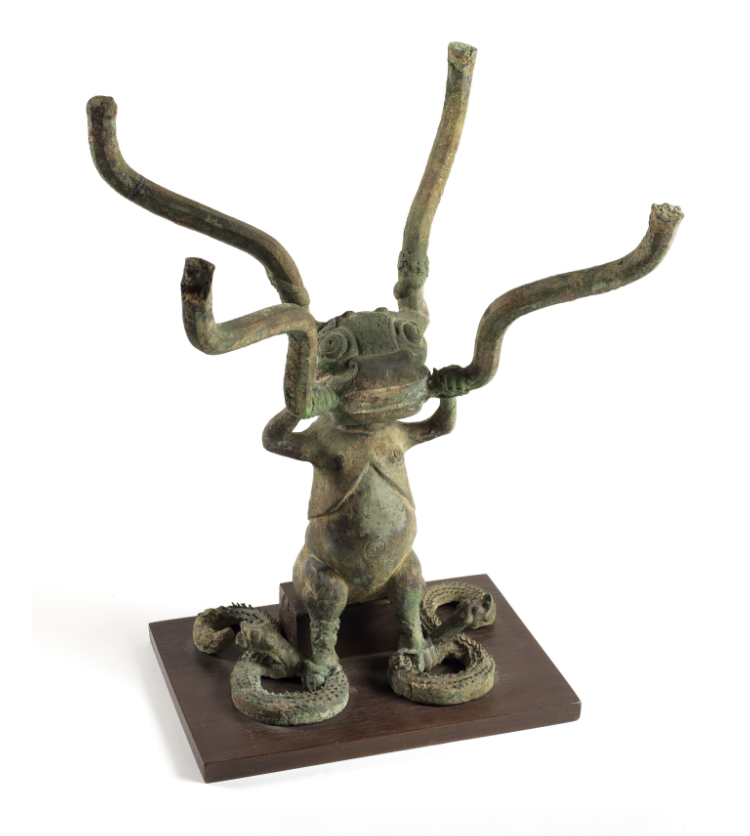Staring into those large, round eyes, is it power and courage you sense? Or a mysterious something you can't quite put your finger on?
This unique animal-shaped stand has the face of a beast and the body of a human. But what could the function of the twisted rod in its mouth be? The creature's chest and belly are exposed, while both of its feet are planted atop coiled snakes with bodies covered in sharp, frightening thorns. It is likely that this imaginary mythical beast could control snakes and that it is a tomb guardian that warded off evil and protected the souls of the deceased. The four rods on its head show signs of breakage. Perhaps they once supported something? Researchers have speculated that it served as a light stand or the base of a stove.
This national treasure was unearthed in 1923 at the tomb of Prince Zheng in Henan Province and is an extremely important bronze for researching the Spring and Autumn period. Notably, China had already been capable of casting bronzes as early as the 18th and 17th century BCE. The material used to make bronzes is actually an alloy of copper, tin, and lead. Because casting bronzes requires large amounts of resources and labor power, bronzes became "state treasures", symbolizing the power of the state and ruling class. Weapons, ritual objects, musical instruments, wine and food vessels, and even burial objects made of bronze were thus all incredibly valuable.
This beast that looks like a Teletubby is called Kuper and has become the main character of stuffed toys, picture books, illustrations, and VR animations, even serving as the popular idol of the National Museum of History.
